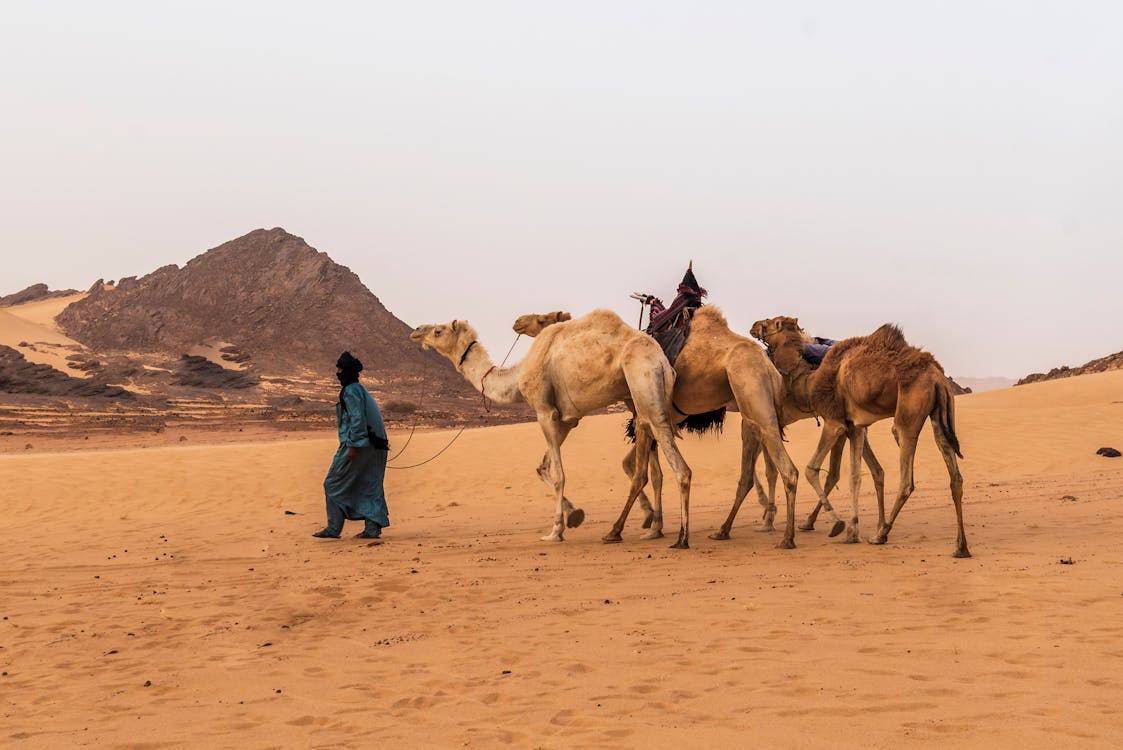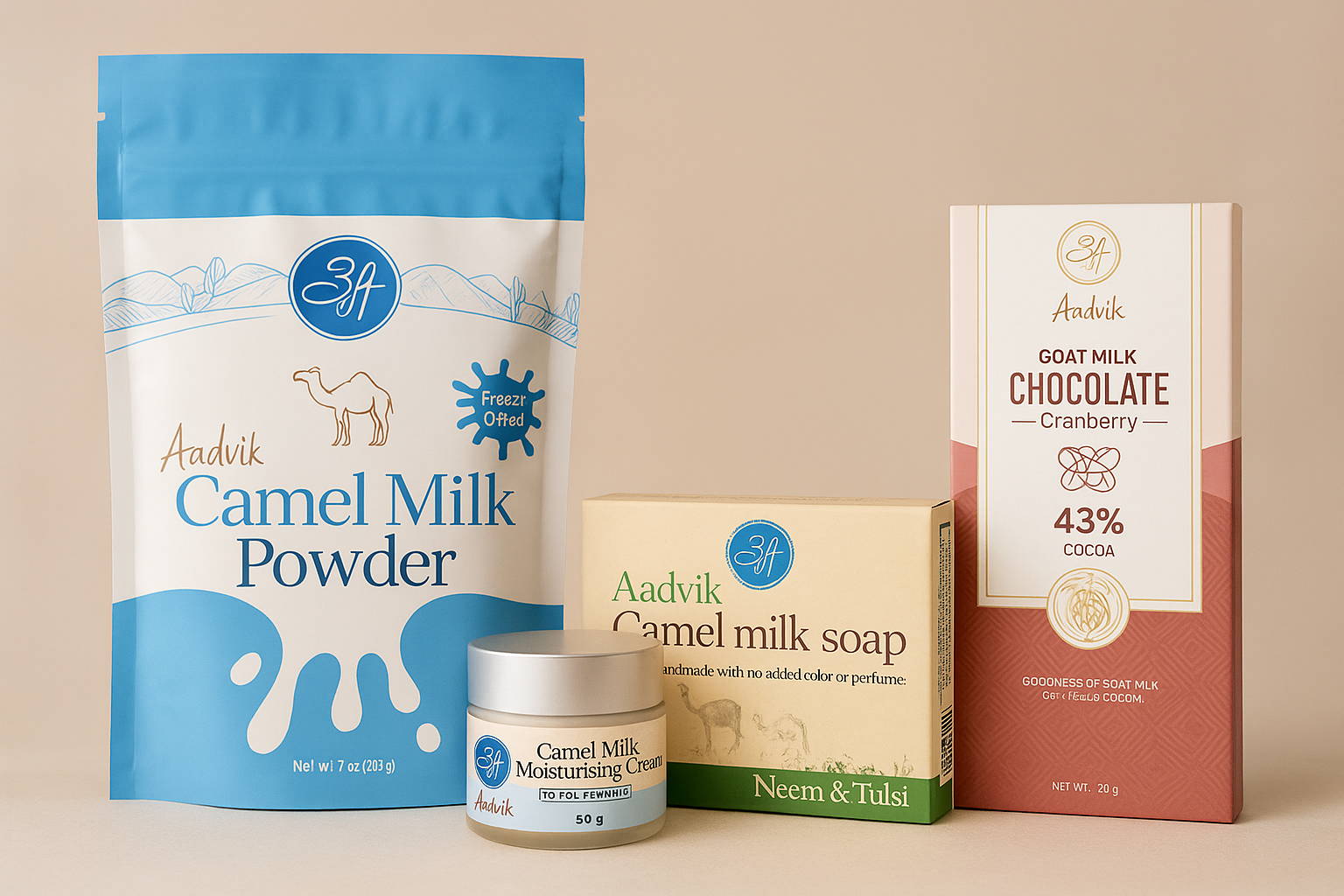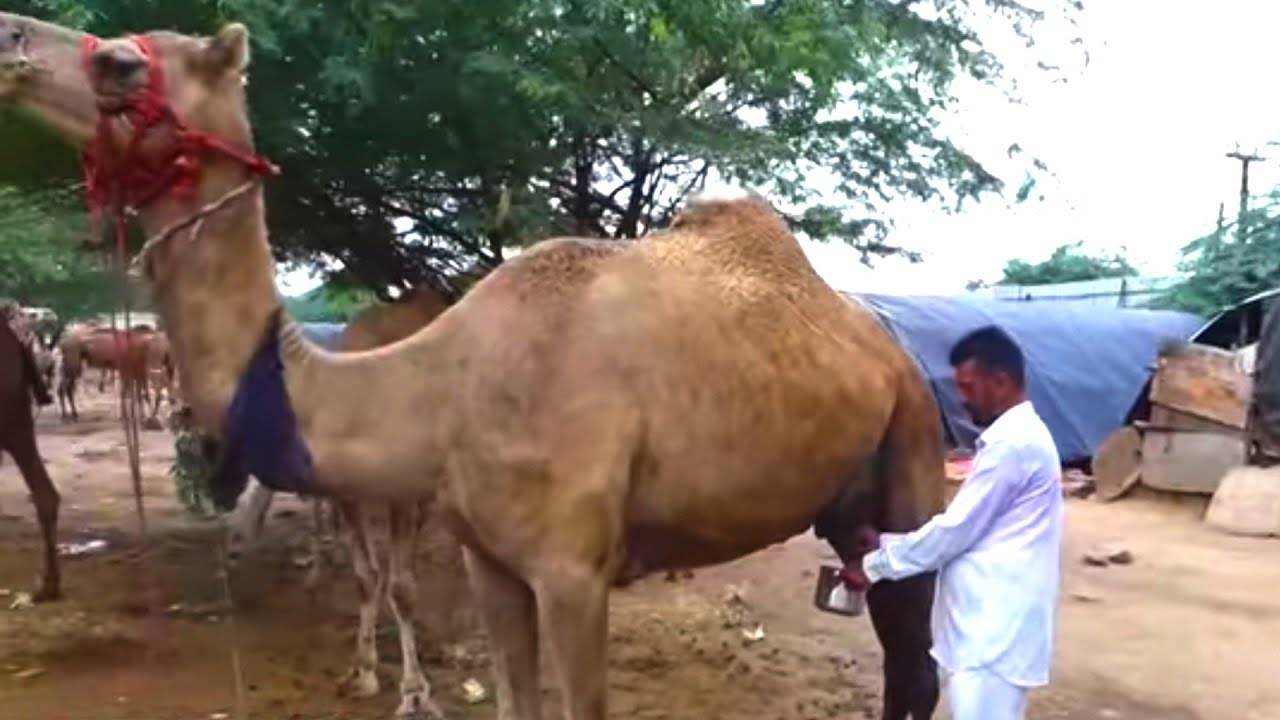Camel milk is referred to as "desert gold" or White gold of the desert because it has nourished desert peoples for thousands of years, hydrating and feeding them in places where food was scarce.
Rise of the Camel Milk Industry: Desert Gold to Global Demand
5 min read | Published: November 14, 2025 | By: Aadvik Foods
Underneath the golden dunes of the Thar’s vast drifting sands, there lies another gold, one that doesn’t shimmer but sustains. Known locally as “White gold of the desert”, camel milk has been the potion of survival to desert-dwelling communities for centuries. It has kept the nomads, herders, and trekkers alive on a land where little else can survive. Today, that humble yet powerful tonic is rewriting its narrative from a survival drink of the deserts to a global wellness revolution worth millions.

Tracking the Ancient roots: Camel milk traditionally
In the deserts, camels are more than just livestock; they are "ships of the desert," companions, and lifelines. The indigenous communities, traditional camel herders, have used camel milk for centuries. As a cool, easily digested dairy product, camel milk was drunk fresh on long desert trips to help prevent fatigue and dehydration.
Evidence suggests that traditional healers also used it as an all-natural remedy for various ailments, including fever, infections, and even diabetes. In encounters with their natural climate, where cows experienced reduced milk production, camels flourished, offering a dairy source that provided food, nutrition, and hydration.
Even now, in small villages throughout the desert areas, locals enjoy warm camel milk in the early morning, a subtle nod to the wisdom of their ancestors.
Modern Rediscovery: A Functional Superfood
- Research indicates that camel milk may help regulate blood sugar, bolster the immune system, and improve digestion.
- It is gentler on the gut for those with lactose intolerance, as it contains less lactose and A1 casein compared to cow's milk, according to studies.
- Scientific investigations have suggested it is rich in insulin-like proteins, vitamin C, and bioactives that have been shown to improve gut health and immune response.
- It may also be called "nature's probiotic drink" due to its anti-inflammatory and antibacterial attributes documented in the studies.

From Dunes to Doorsteps: The Camel Milk Revolution

Global Surge: The Camel Milk Industry Boom
Conclusion
Frequently Asked Questions
Why is camel milk referred to as "desert gold" or White Gold of the Desert?
Can a person intolerant to dairy drink camel milk?
Camel milk has less lactose than cow's milk, which sometimes makes it easier to digest for people with mild lactose intolerance. However, it is suggested that a healthcare professional must be consulted before starting anything new in the diet.
What are the primary health benefits of camel milk?
Camel milk helps to regulate blood sugar, supports immunity, aids in digestion, and may nourish skin naturally, making it a health and beauty superfood.
How is camel milk being used today?
In addition to drinking it, camel milk is now found in powders, chocolates, body care products, and gourmet foods, bringing the ancient desert health foods to the current wellness trend.
Which country is the largest producer of camel milk?
As per reports (2023), Kenya is the largest producer of camel milk in the world, followed by Somalia and Pakistan.

